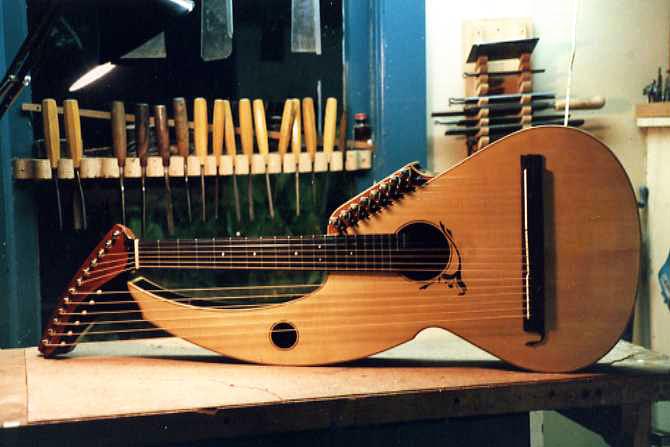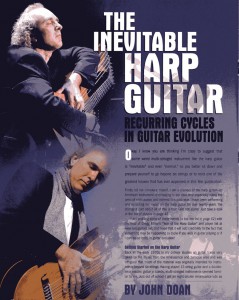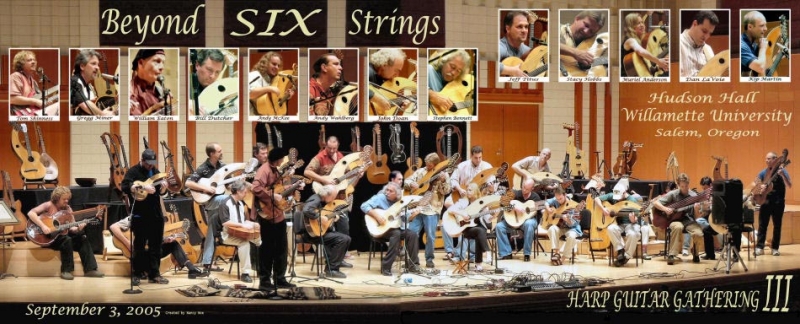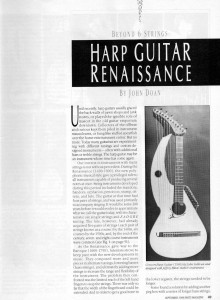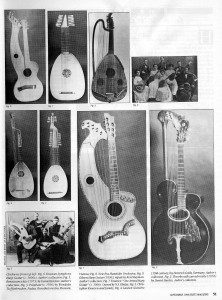In Volume 7, Issue 1 of harpguitars.net, John Doan wrote the article, ‘The “Expanded” Harp Guitar – Adding Possibilities with Super-Trebles.’
The playing and making of harp guitars today is causing a re-examination of many basic design features that go into making a fine guitar-like instrument with an expanded range. The six-string guitar world is alive and vital today but with the addition of sub-basses and super-trebles entirely new dimensions and fundamental questions arise that are not being commonly discussed among six-string guitar builders. I have concluded that after reviewing and playing many prototype designs today that simply having skills as a six-string guitar builder is not going to result in a great harp guitar. Harp guitar construction in many ways is a very different activity than building a six-string instrument.
The article examines the construction, enhancement, and benefits the super-trebles add to the harp guitar as he discusses the theory and techniques used to create the Sullivan/Elliott harp guitar John developed.

